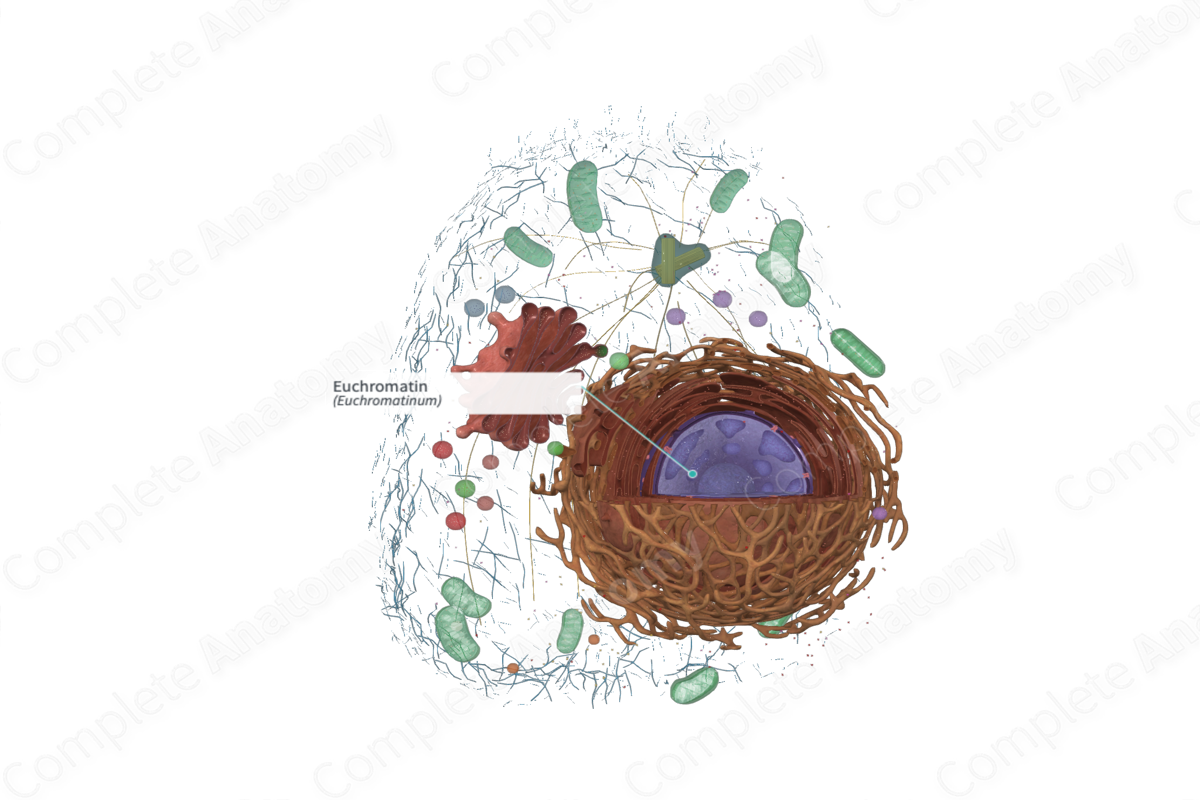
Quick Facts
Euchromatin is the form of chromatin that is genetically active and constitutes the majority of the chromosomes; it is relatively uncoiled and stains lightly during interphase and condenses and stains more darkly during nuclear division (Dorland, 2011).
Related parts of the anatomy
Structure and/or Key Feature(s)
The lighter-stained, dispersed chromatin is called euchromatin. It's less compact. When it's less compact or when there's a lot of euchromatin inside the cell nucleus, it means that the DNA is uncoiled, and more open to transcriptional enzymes.
Function
Euchromatin is indicative of the genetic information in the DNA being read and transcribed. Therefore, euchromatin is prominent in cells that are very metabolically active particularly in the production of proteins (Ross and Pawlina, 2006; Ovalle, Nahirney and Netter, 2013; McKinley, O'Loughlin and Pennefather-O'Brien, 2016).
References
Dorland, W. (2011) Dorland's Illustrated Medical Dictionary. 32nd edn. Philadelphia, USA: Elsevier Saunders.
McKinley, M. P., O'Loughlin, V. D. and Pennefather-O'Brien, E. E. (2016) Human Anatomy. 5th edn.: McGraw-Hill Education.
Ovalle, W. K., Nahirney, P. C. and Netter, F. H. (2013) Netter's Essential Histology. ClinicalKey 2012: Elsevier Saunders.
Ross, M. H. and Pawlina, W. (2006) Histology: A text and atlas. Lippincott Williams & Wilkins.
